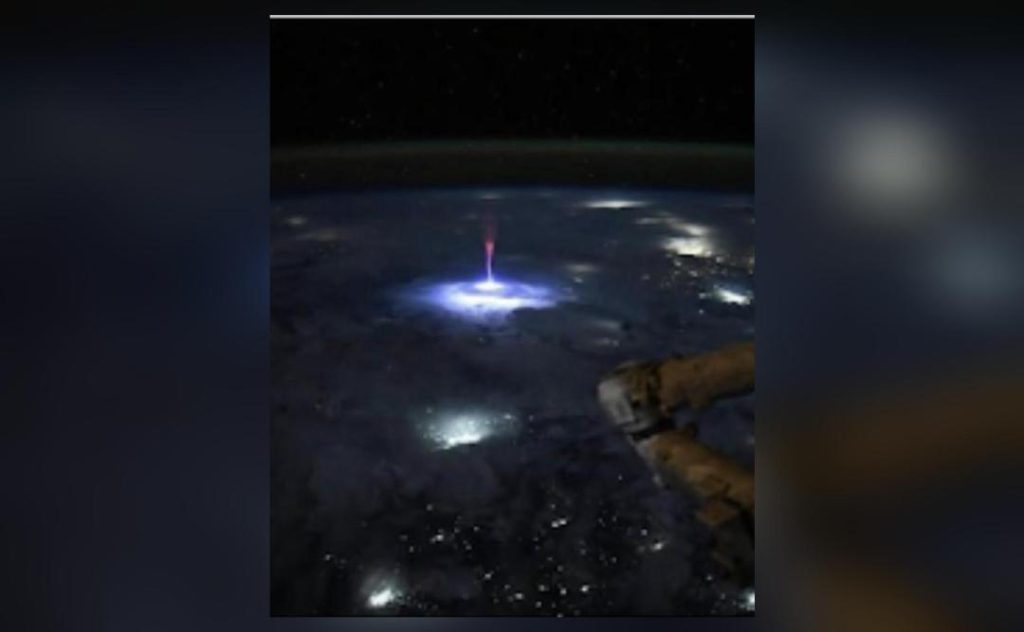
Rare ‘Gigantic Jet’ Captured from Space
On July 3, NASA astronaut Nicole Ayers captured a rare and breathtaking phenomenon from the International Space Station (ISS) – a ‘gigantic jet’ extending from the top of a thunderstorm into the upper atmosphere. This extraordinary event has sparked excitement among scientists and space enthusiasts alike, offering a unique glimpse into the awe-inspiring power of electrical discharges in the atmosphere.
Gigantic jets, also known as red sprites, are a relatively rare type of electrical discharge that appears when turbulent conditions at the top of towering thunderstorms allow lightning to escape the storm. These powerful discharges can extend as high as 50 miles (80 kilometers) above the Earth’s surface, making them a spectacular sight to behold from space.
Astronaut Nicole Ayers, a NASA astronaut and geophysicist, was on duty at the ISS when she captured the incredible footage of the gigantic jet. The image, which has been released by NASA, shows a vibrant red streak extending from the top of a thunderstorm into the upper atmosphere, illuminated by the intense electrical discharge.
“This is a spritacular moment!” exclaimed Ayers in a statement. “I’ve been on many spacewalks, but this is the most breathtaking view I’ve ever seen from the ISS. It’s incredible to think that this phenomenon is happening thousands of miles away from us, and yet we can capture it from space.”
The gigantic jet was first detected using NASA’s Cloud-Aerosol Transport System (CATS) instrument, which is designed to study clouds and aerosols from space. The instrument uses a laser to measure the density of particles in the atmosphere, allowing scientists to track changes in cloud formation and atmospheric circulation patterns.
The CATS instrument is part of NASA’s Earth Observing System, a network of satellites and ground-based instruments designed to study the Earth’s atmosphere, oceans, and land surfaces. By combining data from multiple sources, scientists can gain a better understanding of the complex interactions between the Earth’s atmosphere and the Sun’s radiation.
Gigantic jets have been studied extensively by scientists in recent years, as they offer a unique window into the workings of the upper atmosphere. These discharges are thought to be triggered by turbulent conditions at the top of thunderstorms, where warm air rises rapidly and cool air sinks. As the air mixes, it creates electrical charges that can build up and eventually discharge as a gigantic jet.
The study of gigantic jets is not only fascinating from a scientific perspective, but it also has practical applications in fields such as weather forecasting and climate modeling. By understanding the behavior of these discharges, scientists can improve their ability to predict severe weather events and better understand the impact of climate change on global weather patterns.
As the ISS continues to orbit the Earth, astronaut Nicole Ayers and her colleagues will continue to capture stunning images of the planet’s atmosphere, providing scientists with valuable insights into the workings of our planet’s most complex and dynamic system.
Source:






